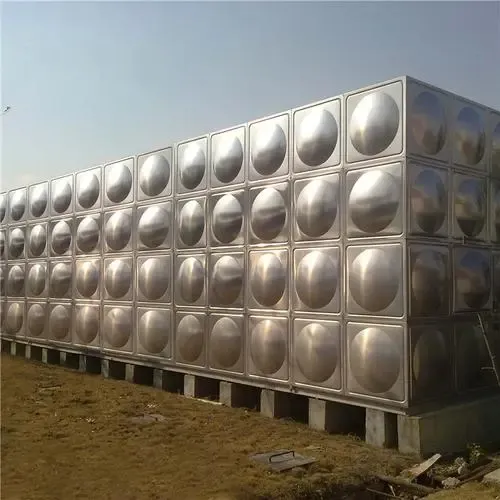loading...
- No. 9, Xingyuan South Street, Dongwaihuan Road, Zaoqiang County, Hengshui, Hebei, China
- admin@zjcomposites.com
- +86 15097380338
- Welcome to visit our website!
Understanding the Function and Importance of FRP Discharge Rods in Engineering Applications
Understanding FRP Discharge Rods Applications and Advantages
In various industrial and environmental settings, managing the flow and discharge of fluids is crucial. One innovative solution that has emerged in this domain is the FRP (Fiber Reinforced Polymer) discharge rod. This technology is gaining traction due to its unique properties that make it superior to traditional materials such as steel or concrete. This article takes an in-depth look at FRP discharge rods, exploring their composition, applications, and advantages.
What is an FRP Discharge Rod?
FRP discharge rods are made from a composite material consisting of a polymer matrix reinforced with fibers, typically glass or carbon. This combination provides the rods with enhanced strength-to-weight ratios, corrosion resistance, and durability. The manufacturing process involves the careful layering of fibers within a resin, resulting in a product that is not only lightweight but also boasts excellent mechanical properties.
Applications of FRP Discharge Rods
FRP discharge rods are utilized across various industries, notably in
1. Water Treatment Plants These rods are commonly used in water management systems for the controlled discharge of treated water. The corrosion resistance of FRP makes it an ideal choice for environments where exposure to chemicals and varying pH levels is common.
2. Oil and Gas Industry In this sector, FRP rods are critical for the discharge of fluids in harsh environments. Their lightweight nature allows for easy handling and installation, while their durability ensures a long service life, reducing the need for frequent replacements.
3. Marine Applications In marine settings, FRP discharge rods are used due to their high resistance to saltwater corrosion. This makes them suitable for applications like sewage discharge systems and stormwater management.
4. Construction In construction projects, FRP rods are employed in various tasks involving the discharge of concrete or other materials. Their strength ensures that they can support substantial loads while remaining lightweight for ease of transport and installation.
5. Chemical Processing The resistance to aggressive chemicals makes FRP discharge rods ideal for use in the chemical industry. They eliminate concerns of rust and degradation that metal counterparts typically face.
frp discharge rod

Advantages of FRP Discharge Rods
The benefits of using FRP discharge rods are numerous
1. Corrosion Resistance One of the primary advantages of FRP materials is their resistance to corrosion. Unlike steel, which can rust and degrade over time, FRP maintains its integrity even in harsh chemical environments, leading to lower maintenance costs and extended service life.
2. Lightweight FRP rods are significantly lighter than traditional materials, making them easier to handle and install. This can result in reduced labor costs and faster project completion times.
3. High Strength Despite their light weight, FRP rods possess high tensile and compressive strengths. This strength allows them to withstand substantial forces without deformation, making them reliable for various applications.
4. Thermal Insulation FRP has excellent thermal insulation properties, which can be beneficial in environments where temperature fluctuations occur. This characteristic prevents heat transfer, protecting sensitive equipment and systems.
5. Versatility The versatility of FRP allows it to be customized for specific applications. Different fiber types, resin formulations, and configurations can be employed to meet the performance requirements of unique environments.
6. Sustainability With an increasing focus on eco-friendliness, FRP materials are favored due to their long service life and recyclability. Using these materials can contribute to more sustainable industrial practices.
Conclusion
FRP discharge rods represent a significant advancement in material science, offering numerous benefits that position them as a preferred choice in a variety of applications. From water treatment to the oil and gas industry, their lightweight, durable, and corrosion-resistant properties make them ideal for managing fluid discharge effectively and efficiently. As industries continue to seek innovative solutions, FRP discharge rods are likely to play an increasingly vital role in the future of fluid management systems.
-
The Rise of FRP Profiles: Strong, Lightweight, and Built to LastNewsJul.14,2025
-
SMC Panel Tanks: A Modern Water Storage Solution for All EnvironmentsNewsJul.14,2025
-
GRP Grating: A Modern Solution for Safe and Durable Access SystemsNewsJul.14,2025
-
Galvanized Steel Water Tanks: Durable, Reliable, and Ready for UseNewsJul.14,2025
-
FRP Mini Mesh Grating: The Safer, Smarter Flooring SolutionNewsJul.14,2025
-
Exploring FRP Vessels: Durable Solutions for Modern Fluid HandlingNewsJul.14,2025
-
GRP Structures: The Future of Lightweight, High-Performance EngineeringNewsJun.20,2025
